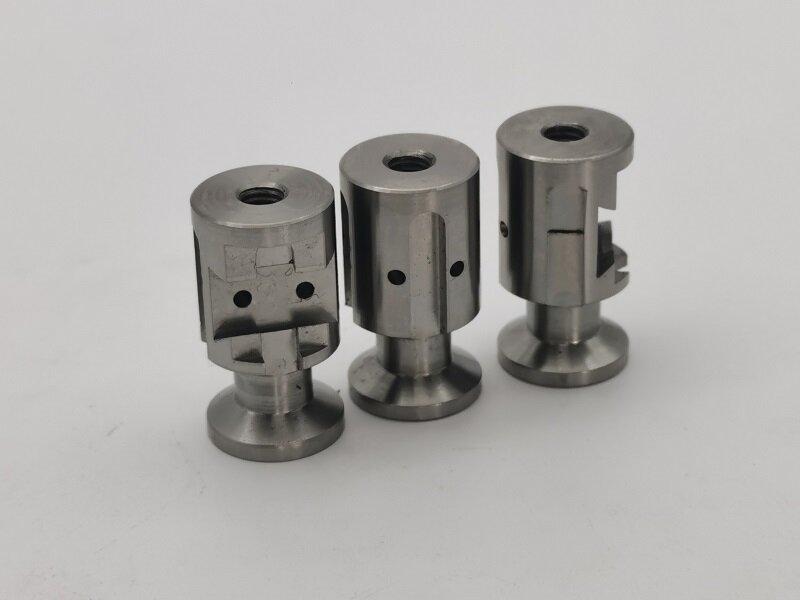Is CNC machining easy to learn for real shop work?
2025-11-07
I stepped into CNC Machining with the same question most buyers and junior engineers ask me. It felt big at first, yet working alongside teams like JING GANG taught me that “easy” depends on goals, tooling, and how quickly you can turn clean drawings into stable chips. The learning curve is real, but with the right guardrails it becomes predictable and surprisingly manageable.
What do I mean by easy in a live machine shop?
Easy does not mean effortless. It means I can set a beginner on a path where scrap stays low, parts pass inspection, and schedules hold. If a newcomer can read a print, probe a workpiece, run a proven program, and adjust offsets without guesswork, that is my definition of easy in week one.
What skills move the needle in the first 30 days?
- Print reading and GD&T basics — datums, true position, flatness, surface finish.
- Workholding fundamentals — vises, soft jaws, parallels, quick swaps for repeat jobs.
- Tool identity — end mills, drills, inserts, nose radius, stick-out, wear offsets.
- Zeroing and probing — setting work offsets, touching tools, trusting the probe report.
- Program hygiene — safe starts, tool change order, coolant, dwell, retracts.
- First-article inspection — micrometers, calipers, bore gauges, go/no-go logic.
How long does it take to go from zero to safe and productive?
Most motivated learners reach basic autonomy in two to six weeks on simple aluminum or plastics, provided the shop uses stable fixtures and proven tool libraries. Complex steels, thin-wall parts, or tight profile tolerances extend the timeline, but the ramp stays linear if process discipline is in place.
Which equipment mix makes the first months less painful?
In my workshop I run a little over twenty machines — vertical and horizontal machining centers, turn-mill platforms, and standard CNC lathes and mills — so I can match each part to the right process rather than force a tool to fit the job. That flexibility lets a beginner start on a forgiving VMC or a stable turning setup before moving to multi-axis work. It also means I can slot urgent prototypes without derailing production, then hand off repeat work to the horizontal for lights-out efficiency.
Where do beginners usually waste time?
- Chasing chatter instead of reducing stick-out or changing entry strategy.
- Over-tightening vises and warping thin stock instead of adding support pads.
- Editing G-code line by line when a feeds and speeds library would fix the root cause.
- Skipping a dry run and discovering a clearance issue at full speed.
- Measuring after the part cools in air rather than checking immediately and noting growth.
What does a simple learning path look like?
- Week 1 — safety, print reading, probing, tool offsets, dry runs, first aluminum bracket.
- Week 2 — repeat part with minor tolerance shift, first-article checklist, scrap analysis.
- Week 3 — basic CAM edits or parameter tweaks, tool life tracking, parallel processing.
- Week 4 — fixture changeover, pocketing plus finishing passes, light deburr standards.
- Weeks 5 to 6 — stainless or brass jobs, thread milling vs tapping, SPC spot checks.
How can I measure progress without guesswork?
| Skill area | What I actually learned | Typical window | Common pitfalls | Ready when |
|---|---|---|---|---|
| Work offsets | Set G54 to G59, verify with probe report, log deltas | 1 to 3 days | Mixing machine and work coordinates | First-article zero shift under 0.02 mm |
| Tool offsets | Touch tools, record length and wear, plan tool order | 2 to 4 days | Ignoring thermal drift and wear | Holds size with ≤2 clicks per shift |
| Feeds and speeds | Start from library, adjust by chip color and sound | 1 to 2 weeks | Chasing chatter with coolant only | Consistent chip form and finish |
| Inspection | Mic, bore gauge, surface finish check, SPC sample | 1 week | Measuring warm parts or burr-masked edges | CTQ features pass on first run |
| CAM edits | Tweak step-over, step-down, entry moves, rest-rough | 2 to 4 weeks | Over-finishing instead of rough-then-finish | Cycle time down 10 to 20 percent |
What materials and tolerances should a beginner start with?
I start learners on 6061-T6 or acetal because the feedback is clear and forgiving. Typical early tolerances are ±0.05 to ±0.10 mm on non-critical features with a 1.6 μm Ra finish target. Stainless, titanium, and thin-wall geometries follow after the basics settle.
Why do CAM and G-code both matter?
CAM gives speed, version control, and toolpath intelligence. G-code literacy saves a setup when something goes sideways — a soft limit, a missed coolant line, or a wrong plane. I expect a beginner to recognize safe starts, planes, canned cycles, and to pause a program safely without losing the work offset.
When does it make sense to learn in house versus partnering?
If your parts are simple, repeatable, and you have steady staff, learning in house pays off. If your work spikes, tolerances are tight, or you need quick spins on design changes, partnering with a mature shop is faster and cheaper. My team handles low-volume prototypes through steady production, then hands off documentation so your engineers know exactly how the part is made.
What can my team actually deliver while you learn?
While you build capability, I can produce custom precision parts on a mixed fleet that includes vertical and horizontal machining centers, turn-mill machines, and standard CNC equipment. The point is not the machine list — it is that I can route the right job to the right spindle, keep quality steady, and meet unique requirements across industries without making your schedule the test bench.
So is CNC machining easy to learn or just doable with a plan?
Once you have devised a plan, the task can be accomplished. When you define “simple” precisely, master the use of fixtures and tools, and consistently track deviations and inspections in the same manner each time, this task transforms from a puzzle into a methodical process. At this point, you can decide whether to expand internal capacity or rely on suppliers based on delivery cycle requirements.
Would you like a fast quote or a short call to map your part?
If you want to compare options, send a print, a target quantity, and any must-hit tolerances. I will come back with a practical route and a timeline. For prototypes or repeat jobs, contact us and tell me what success looks like for you — I will respond with a clear plan, a fair price, and a path that keeps scrap low and schedules tight.



